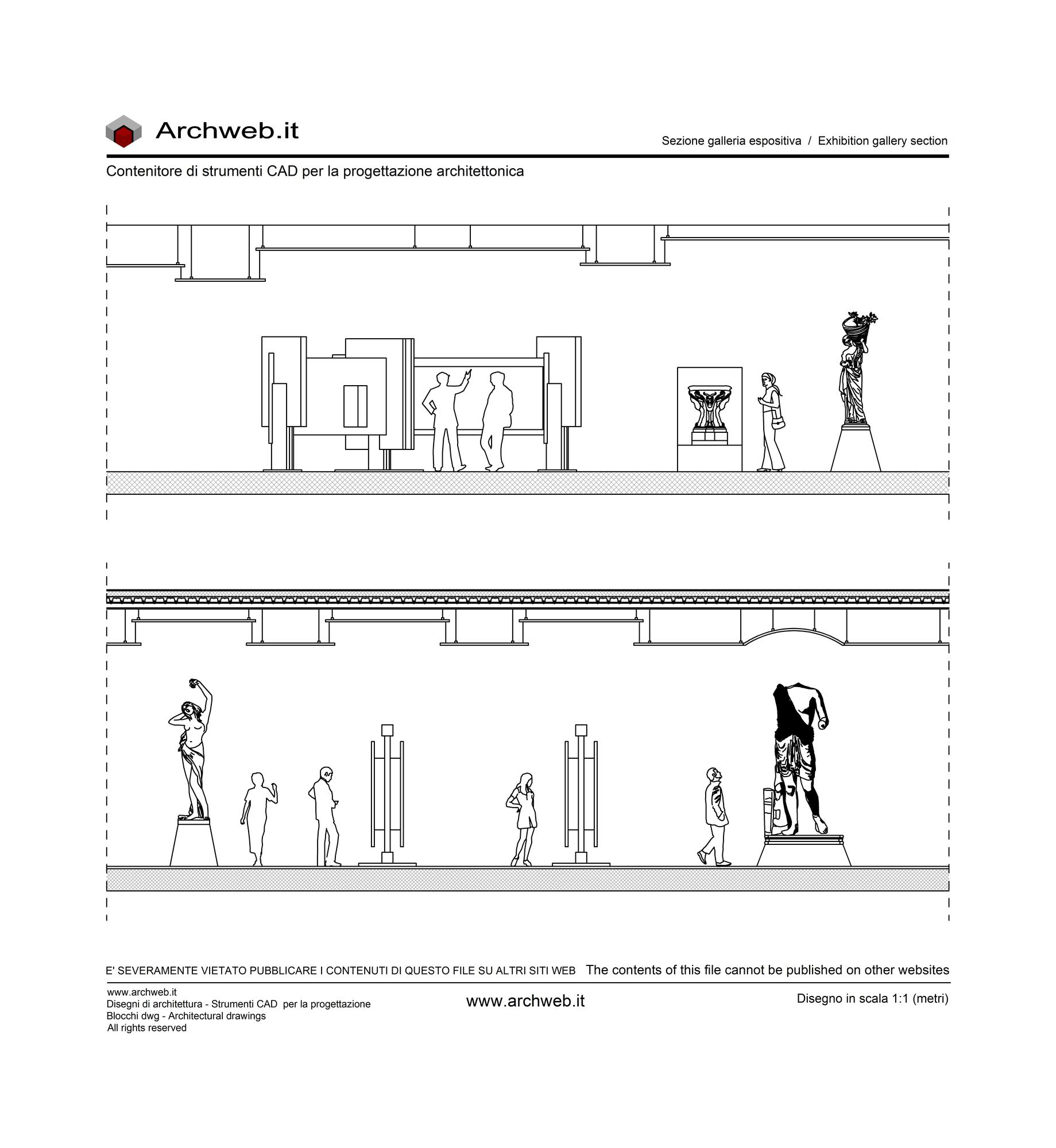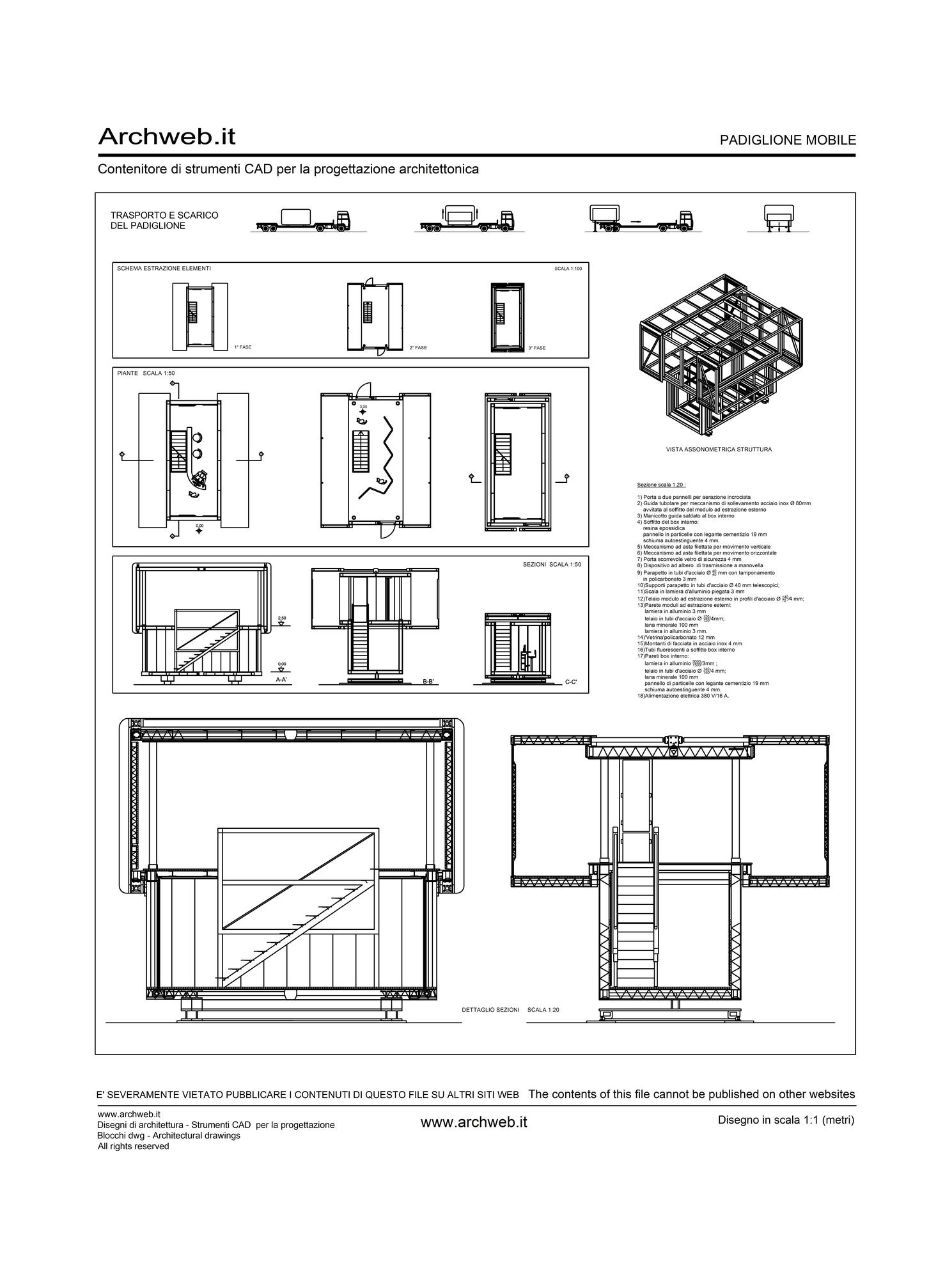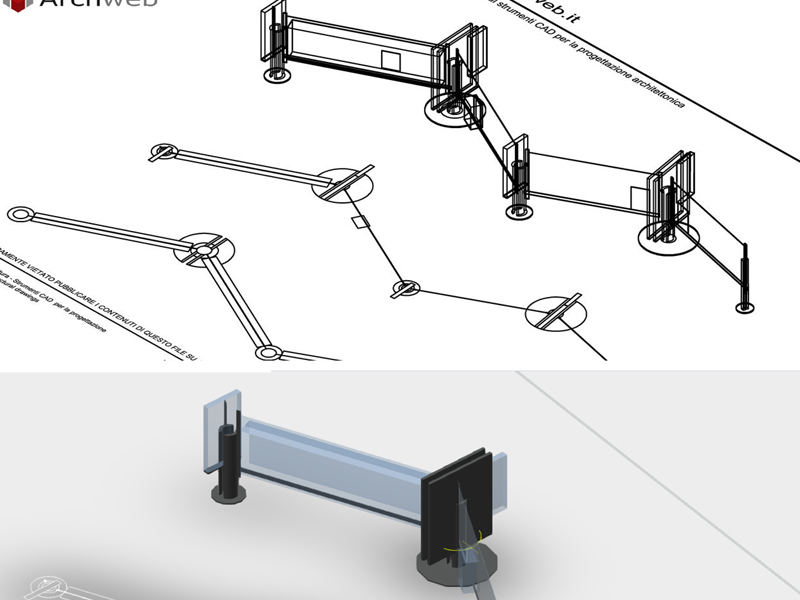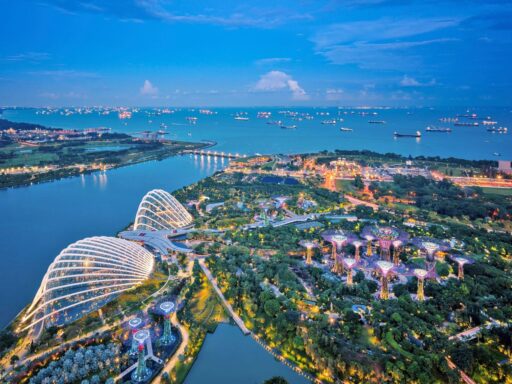The project and the museum layout
The evolution of the museum from its origins to the present day

The museum is considered a building typology in all respects, the project of which has undergone considerable variations throughout history. It is possible to divide its development into phases: the first period dates back to the seventeenth century, when the actual institution of the museum was not yet widespread but the doors of the noble residences that hosted pictorial collections and private sculptures used to be opened to a restricted public . It was only between the end of the 1700s and the 1800s that, following the French Revolution, the need arose to make public the cultural assets stolen from the noble class, placing them in places designed for this purpose. The first museums are thus designed with the aim of educating and informing a larger user base than in the past. Over the years, these buildings expand, hosting an increasing number of historical works and finds. This is how we arrive at the progressive implementation of exhibition halls and service spaces dedicated to welcoming and interacting with users.
The third phase of development involves the birth of the contemporary museum, conceived as a place of observation, education and multi-sensorial experience. It is important to point out how over time the users and the needs that bind it to the exhibition places change. For this reason, the museum is no longer conceived as a container of works to be observed only but as a place to educate and interact with them. The direct consequence consists in the progressive change of the design of the spaces and the components, studied on the changing needs of an increasingly curious public. In this regard, it is important to specify how the organization and the museum set up constitute a complex factor: they change depending on the time, location, theme, type of exhibition and the audience for which they are intended. However, there are some design rules that can be considered universal in order to achieve a successful result. The first aspect to consider is represented by the context and the building in which the exhibition is located. The dimensions, accessibility and characteristics of the place where the exhibition site is located are elements of fundamental importance that must be studied and known in order to start the design process. In fact, unlike the past, today we are more attentive to the visitor’s mood with the aim of involving him and not boring him. It is good to consider moments of “pause” from the visit, moments in which the gaze is diverted from the work and rests on the environment or on the openings that overlook the external context. For this reason, for example, if a window can offer a pleasant view it should be used for parking, while otherwise it can be filtered with display panels or explanatory captions.
If you are in buildings of great value, the museum can also become a “museum of itself” thanks to an environmental reading of internal components such as floors, ceilings or stairs. It is therefore clear that it is essential to take into account the characteristics of the place and the architectural and historical consistency of the building hosting the exhibition and how important it is to best convey this information to the public who will visit the place. The latter is considered an actor of vital importance for the museum project itself: depending on the target of the recipients of the exhibition, the routes, the exhibition order, the location of the works will be studied and thermal, acoustic and visual comfort ensured. Furthermore, accessibility is of primary importance, guaranteed thanks to the total absence of architectural barriers. In order to obtain a correct interaction of the public with the museum spaces, it is necessary to analyze and better design the exhibition equipment. It is not just about the physical structures suitable for hosting the exhibits, but all those multimedia and interactive systems aimed at giving back to the customers a real experience.
Sounds, lights and colors convey precise sensations, leaving a well-defined memory to those who visit the museum. In fact, to date, this place no longer takes on the simple information function but becomes a promoter of culture with the aim of telling the story of each work, the context in which it was created. In addition, the added value is represented by the desire to educate by involving the visitor firsthand, making him feel an active part of the museum. It is therefore essential to consider the preparation of the works: the position, height, light, distances, accessibility of each individual object must be studied in order to ensure the visual comfort of the public and their correct and safe conservation. It is therefore possible to divide the design of the museum set-up into three areas: the first at the macro scale, focused on the relationship between exhibition and exhibition spaces, the second at an intermediate scale, focused on the relationship between the public and works and the last at the microscale, attentive to the characteristics of every single object.
The evolution of the museum from its origins to the present day
The museum, from the Greek “mouseion = dwelling of the muses”, has very ancient origins and fulfilled the function of collector of works and goods that constituted the spoils of war. For this reason, its main purpose was yes to inform and transmit but also to glorify the deeds of the ruling dynasty (first generation museums). It is only during the eighteenth century that the museum was recognized as a real institution, a period during which wealthy Lords donated collections of works in order to preserve them and not disperse them. At the end of the century, these collections took on a public nature and for this reason the range of users who had access to them considerably widened. It is starting from 1814 that the first public museums in Northern Europe are built which will gain a growing consensus among users (second generation museums). From an architectural point of view, the first museums had a central plan with entrance and dome above.
The galleries were arranged around a patio instead. Subsequently, there is a significant expansion of the structures, with new additions covered and uncovered within the existing buildings. However, it was only in the twentieth century that the idea of creating ad hoc museums to house the works of contemporary culture and no longer only those belonging to the past made its way. These are large buildings, designed to accommodate interactive works and events, aimed at leaving the memory of an experience lived by patrons. These artifacts are characterized by a strong symbolic connotation and take great care of the relationship between the context, the exhibition space and the work. One example is the Center George Pompidou by Renzo Piano and Richard Rogers, built in Paris in 1977 with the aim of creating the first multifunctional museum in the city that would also act as an attraction pole for the entire area. In fact, it is the first museum with a cinema, auditorium and commercial establishments which has considerably enhanced a previously poor and under-exploited neighborhood.
Another famous case is represented by the Guggenheim Museum in Bilbao, built as part of an urban regeneration program dated 1993-96. In fact, previously on the lot there was a disused industry: Frank Gehry’s goal was to revitalize a space that is close to the city center, providing it with a building capable of hosting large works. The latest and present-day museum generation is characterized by open buildings and places that analyze and display cultural characteristics of a specific area or territory (eco-museums, open-air museums).
Sometimes, we witness the recovery and refunctionalization of abandoned structures that once covered different functions. The Berlin Museum of Contemporary Art, for example, found a place inside an old railway station on the Berlin – Hamburg line. In 1987, additions generated today’s complex which does not stand out as much for the particularity of the spaces as for the parties and the contemporary works it houses. In today’s museums, there are often additional activities in addition to the classic exhibition activities, designed on the event that revolves around the specific exhibition. It is a different approach that wants to make the public more involved.
Typical environments of the contemporary museum
Given that each museum reality is made up of specific characteristics linked to the place, culture and set objectives, it is possible to hypothesize a “typical structure” divided into the recurring functional areas. The first is the access area, used for welcoming the visitor and for this purpose equipped with an information counter and ticket office. In the immediate vicinity, but in an outermost area, there is the area with bookshop, cafeteria and toilet. This core is conceived as a stand-alone and can also be used in extended hours compared to the opening hours of the actual museum. Next to the entrance, there is the cloakroom and the rest area where visitors can find themselves in groups for guided tours. Sometimes this space is equipped with useful seats for waiting. Continuing, the exhibition halls take place which wind along ad hoc designed routes.
On the upper floors there are often some rooms used for different functions and necessary for the museum; these are the administrative offices, the studies for the restoration and enhancement of the works, the warehouses, while the deposits and archives are usually located in the underground floors. Sometimes there are also classrooms, libraries and conference rooms. These environments are connected to each other through paths that are divided into public and private: the former are necessary for visits and access to service points, the latter are used by museum staff and scholars. The two types must never meet but both must ensure accessibility, safety and the absence of architectural barriers.
Set-up components
The set-up project includes the choice of display types and explanatory panels, the lighting study and the calculation of the artificial light necessary for each environment, the colorimetry, the insertion of climatic devices, theft and fire prevention. These are complex but essential elements for the success of the entire museum and for the user’s psycho-physical comfort. First of all, it is necessary to analyze the consistency of the building and the parts that compose it, that is, the floor, walls and ceilings. The floor must be resistant, ensure durability over time, easy cleaning and safety. In fact, it is necessary that the surfaces are not slippery and that there are no obstacles, in order to guarantee free use for everyone. As for the ceiling, it is good to estimate the insertion of false ceilings indispensable for the insertion of scenographic lighting. Sometimes, floors and ceilings are an integral part of the layout and help to create a specific atmosphere. In the same way, the walls and the relative openings must be considered: if on the one hand the natural light that enters the environment is of fundamental importance for achieving visual comfort, on the other it is essential to provide shielding to protect the exhibited works. The latter can find accommodation in different display types, the main ones are:
HANGING EQUIPMENT
Chosen for works that do not need to be observed at 360 ° such as paintings, paintings and historical maps. The hanging therefore presupposes a front view and consists of a wall, panel and hanger (hooks, chains …).
SUPPORTED INSTALLATION
Unlike hanging, it allows an all-round view of the work thanks to the presence of an element that elevates it from the floor making it visible from the best point of view. The necessary equipment consists of the base, the pedestal and the platform.
SUSPENDED SET-UP
Designed for all those objects that must be observed from below or from above, at 360 °. Here the space-work relationship is privileged (where the space is made up of the ceiling) and the set-up includes ropes, tie rods and hooks to hang the object.
PANEL SET-UP
It includes a plane on which to anchor the two or three-dimensional element; the panel can be mass-produced or handcrafted and consists of different materials such as wood, PVC and metals. There are various types of panels: simple, wall-mounted, hung from the ceiling or fixed to the floor by means of non-invasive elements. Depending on the type, the panel will consist of more or less heavy material. In addition, the set-up may include a single element, central to the environment or different pieces placed side by side and superimposed.
PROTECTED EQUIPMENT
Necessary for works that must be preserved by external agents and possible theft. The most widespread typology is characterized by the showcase, capable of creating an environment separate from the museum and with an internal microclimate studied on the characteristics of the object contained. There are different showcase models: separate, placed side by side and built-in. This type of installation can have a horizontal or vertical distribution; in the first case there are flat or inclined (lectern) models, while in the second it consists of a base, a glass case and a hat containing the luminous devices.
SPECIAL EQUIPMENT
Specifically designed on the work to be exhibited, it does not provide standardized equipment but tailor-made, each time different. It is frequently used in temporary exhibitions, when the artist wants to convey a unique message of its kind, combining special lighting, material and sensory effects. It is an unconventional typology.

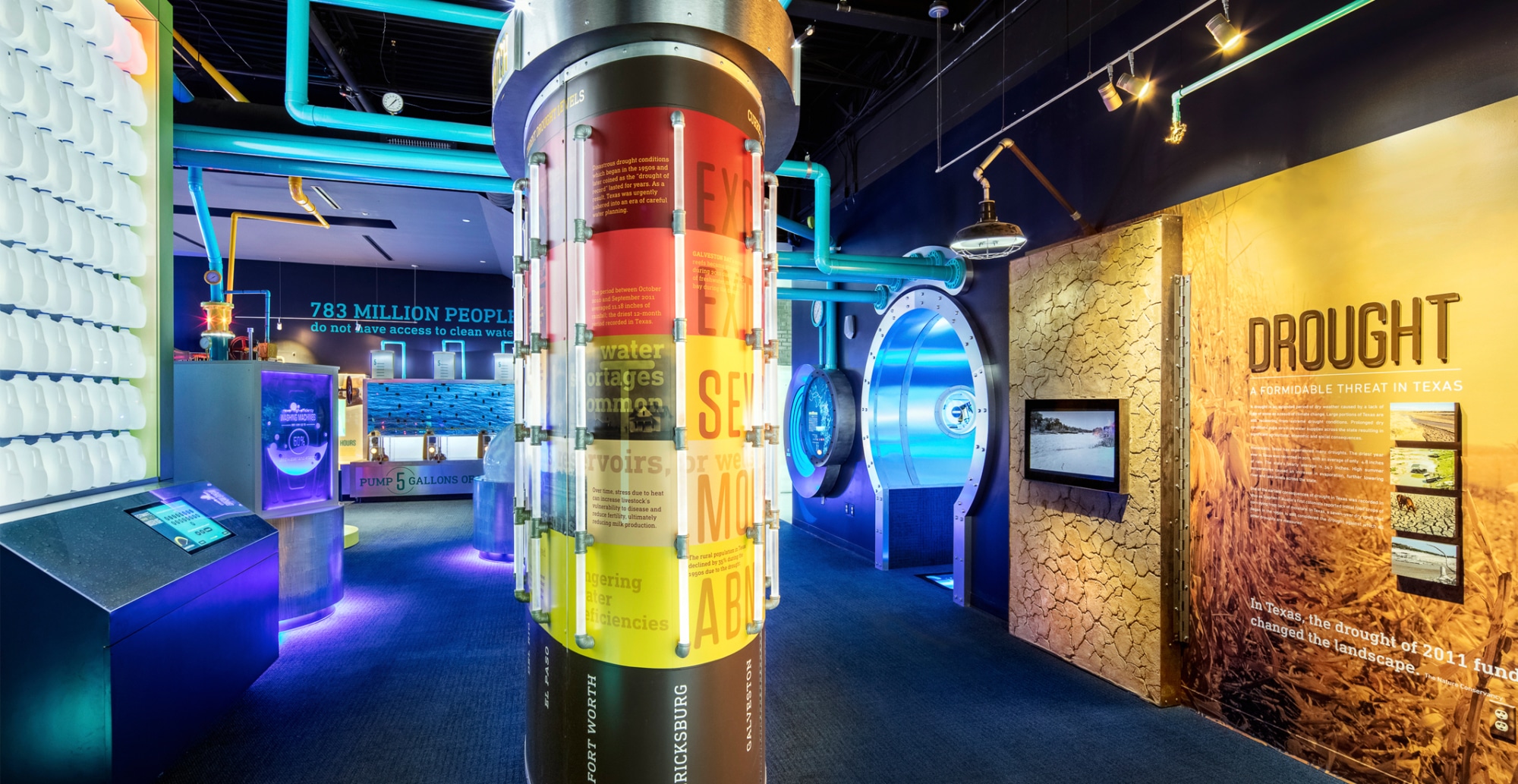
Source: https://www.coebiarredamenti.com
In addition to the distinction between the various types, it is important to specify how the set-up can be handcrafted or serial. For each of the two variants there are some pros and cons: if in fact the creation of an exhibition with handcrafted components presupposes uniqueness and total customization, it is important to be aware that these variants involve a higher cost. In fact, the serial number is cheaper and reusable, however at the expense of originality and specific business needs. The serial method is widely used in the exhibition area because it is considered optimal thanks to its lightness, simple assembly and disassembly, easy transportation, reusability and durability of its elements. What must always be kept in mind is the importance of the accessibility of the type of set-up which must provide for the possibility of observation for everyone, adults, children, the elderly and the disabled. The search for the optimal point of view is fundamental for educational and information planning aimed at everyone, without distinction.
The lighting project
The choices regarding the lighting aspect are of fundamental importance for the success of the museum project. First of all, it is necessary to study the type of work exhibited and the message that it must transmit, in order to accentuate its characters and make them noticed by the observer also through the correct lighting. In addition, there are many elements that should be kept in mind because, unlike environments for different uses, the museum must preserve and preserve goods of significant value. This is why there are various elements that need to be analyzed: the constraints to which the works are subject, the organizational aspects of the space and the set-up objectives that must respect creativity but above all the set budget. To correctly calculate the lighting parameters, it is good to consider the individual functions covered by the environment and its sub-areas. In fact, there will be different needs in areas intended for reception, exhibition, sale and parking.
In the museum, each light source must be chosen and positioned according to a specific purpose, leaving nothing to chance. For this reason, it is good to opt for luminaires with diffused, punctual, top, directional and warm or cold shades depending on the need. It is good to specify how the Superintendency establishes generic rules to be followed according to the type and material of the work that must be exhibited and illuminated. In fact, lighting can cause harmful effects due to infrared and ultraviolet radiation; they range from finds insensitive to light, of an inorganic nature such as metals, where 300 lux are also granted, to those very sensitive to light such as paintings containing pigments, inks and lacquers, for which you must not go beyond 50 lux . Incorrect lighting can cause premature degradation of all paper materials, such as papyrus and parchments, which are subject to yellowing and fading and can also lead to the embrittlement of photographic materials. To solve this type of problem, it is possible to use LED lights that do not carry harmful rays. Used in the preparation of the works but also in emergency lighting and signage, they have the advantage of having small dimensions and ensuring a long life. In any case, even this type of bulb must be sized and used without unnecessary excess.
In quest’ambito, è bene quindi prestare attenzione al tipo di opera che va illuminata poichè un quadro necessiterà di una luce diversa rispetto ad una scultura o ad un reperto storico, così come una fotografia sarà valorizzata in modo diverso rispetto ad un papiro antico. Inoltre, è importante tenere presente il messaggio che si vuole inviare al pubblico e i percorsi, se previsti, che si vogliono fare percorrere. A seconda del tipo di illuminazione desiderata, è possibile scegliere tra luce diffusa verso il basso, luce concentrata, luce delimitata e luce riflessa. Stabilito il tipo di luce è bene optare per i corpi illuminanti più adatti a fornirla poiché sul mercato ne sono presenti diversi modelli:
- Ceiling> spotlights with track, ceiling lights
- In the false ceiling> recessed spotlights, ceiling lights
- From the ground> lamps with floor lamp
- On the wall> applique
Over the years, the idea of museum has changed a lot and the functions it covers have been re-evaluated: the need to make an experience that excites the visitor and leave him a positive memory has spread. Light also contributes to this aim through the use of new technologies and thanks to the integration of acoustic and optical effects that can excite the public. The museum thus becomes a sensory journey where the luminaires are placed according to predetermined designs, with a strong scenic impact. An example of this type of approach is represented by Jean Nouvel’s “Desert Rose National Museum of Qatar”, inaugurated on March 28, 2019 in Doha. The numerous luminous displays and the rooms equipped with sensorial lights narrate the natural and anthropological development of Quatar, taking on an educational role but also exciting and amazing the visitor.
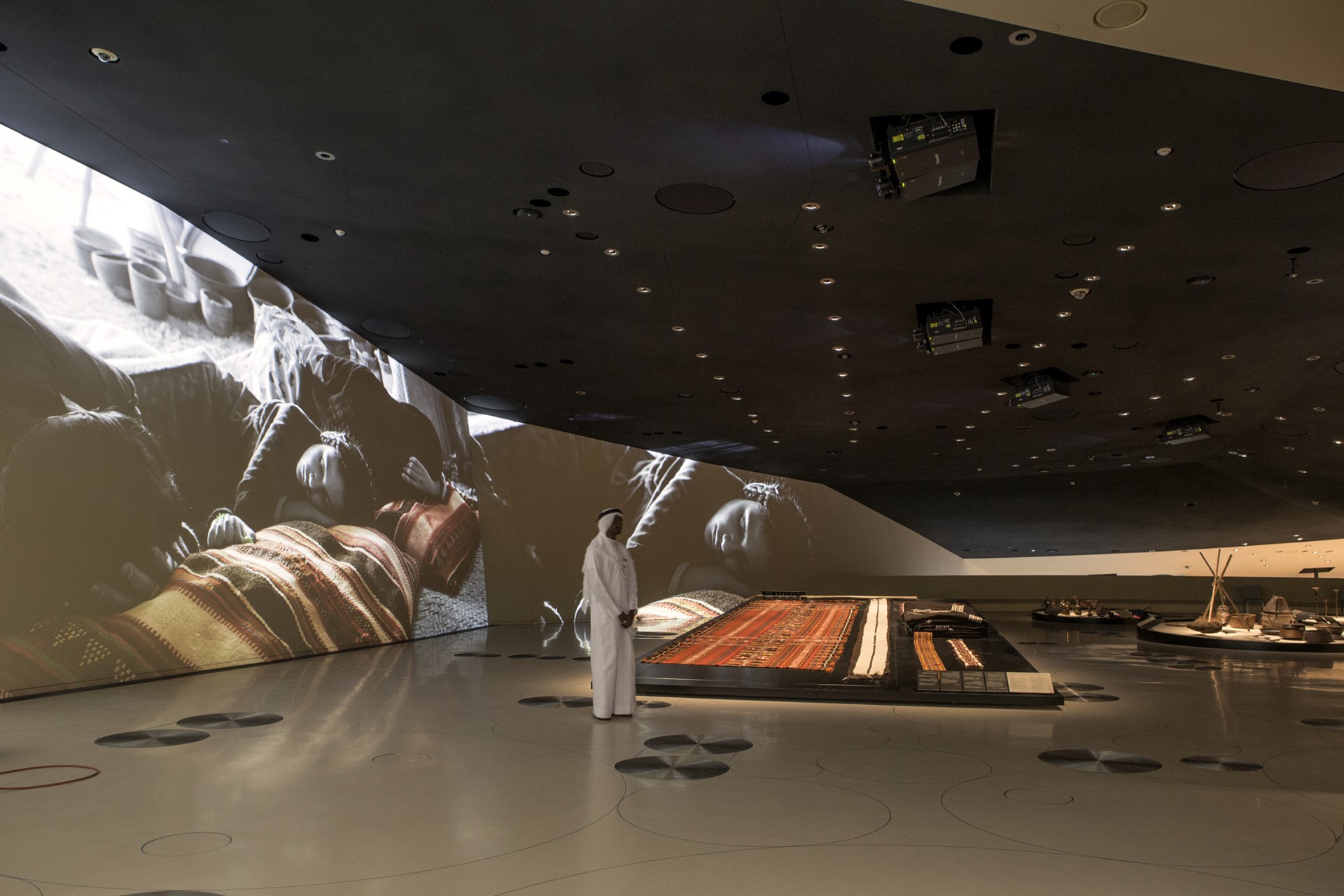

Source: https://www.floornature.it/jean-nouvel-desert-rose-national-museum-qatar-14574/
The recent development of the local museum and the scientific museum
Over the past decades, the need to transmit to future generations the uses and traditions of a specific territorial reality has spread more and more. It is in this way that the museums of the area have found a raison d’etre, designed as containers of local culture and intended for a wider catchment area. One of the characteristics that distinguishes them is the authenticity and simplicity of the layout, designed to effectively inform and pass down elements belonging to the local culture to posterity. The museological project of the interior spaces is studied according to the intent and peculiarities of the exhibits. A recurring idea is to conceive the installation as an integral part of the environment, which can be used directly by the visitor without closed elements and dividers. The intent is to guarantee the user direct involvement and stimulate him to discover more effectively, making him become an active part of the cognitive process.
However, if there are objects of small size and high value, they will be kept and displayed inside display cases and showcases. In addition, another important aspect of the ethnographic museum concerns the ability to combine the past and the present: it is indeed a testimony and local memory of the past but must develop cognitive methods by spreading them in a modern key. Thanks to innovative techniques and contemporary means, the past must be communicated by adapting to today’s needs, only in this way can culture become stimulating and engaging. Optical effects, colors, lights and sounds must convey a message and leave a memory. Since the museum today no longer has only the information function but also and above all the training function, the integration of educational activities and experiences related to the exhibition is increasingly widespread. To this end, the standard set-up includes interactive panels, video-documentaries, emotional itineraries and specific workshops that also include practical activities. These educational services are of fundamental importance for the ethnographic museum and allow the public to actively use the exhibition spaces, promoting learning and involvement with respect to the topics covered.
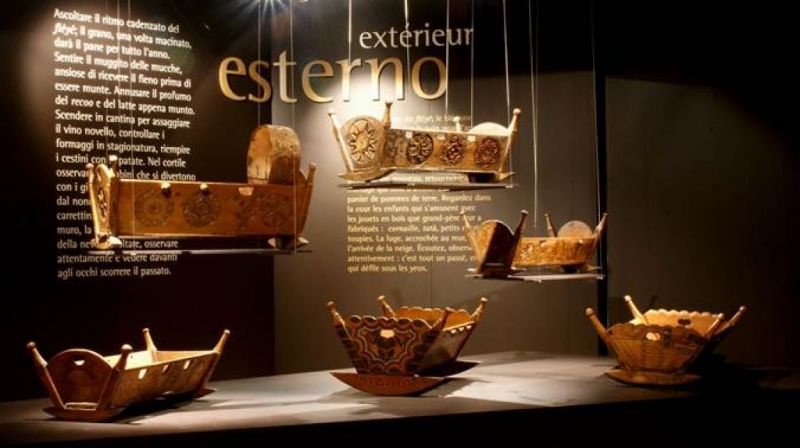
Source: http://www.allestimentimuseali.beniculturali.it
Much like the territorial museum, the scientific museum aims to promote culture belonging to the field of science and technology. Introduced to restore valuable value to scientific discoveries, as was customary for artistic heritage, they undergo many changes throughout history. In fact, they originally appeared as austere-looking locations where objects contained within display cases and showcases were kept that could not be touched in any way. It is from the 1960s that scientific museums suffer a crisis caused by the introduction of science centers. The latter stand as witnesses of the past but also as interactive poles attractors who use a playful – educational approach towards the visitor. In fact, the didactic and training aspect assumes a fundamental importance here: observation, interaction and experience become prerogatives to be considered from the first planning stages. The public becomes the protagonist of the visit thanks to the set-up which includes interactive islands and paths where you can touch the exhibited work with your hand.
This is an approach that places discovery at the center of everything: no sequence is imposed, access is free and the visitor must participate sensitively in the event. With the science museum, the classic model of this category is called into question with the aim of enticing the visitor to participate in a manner no longer as passive as in the past. The scientific exhibition involves different types of events and museums: the cities of the sciences where the set-up affects the urban scale, the educational services centers set up to teach, the scientific lunaparks introduced for fun and yet the scientific agoras designed for holding conferences and meetings.
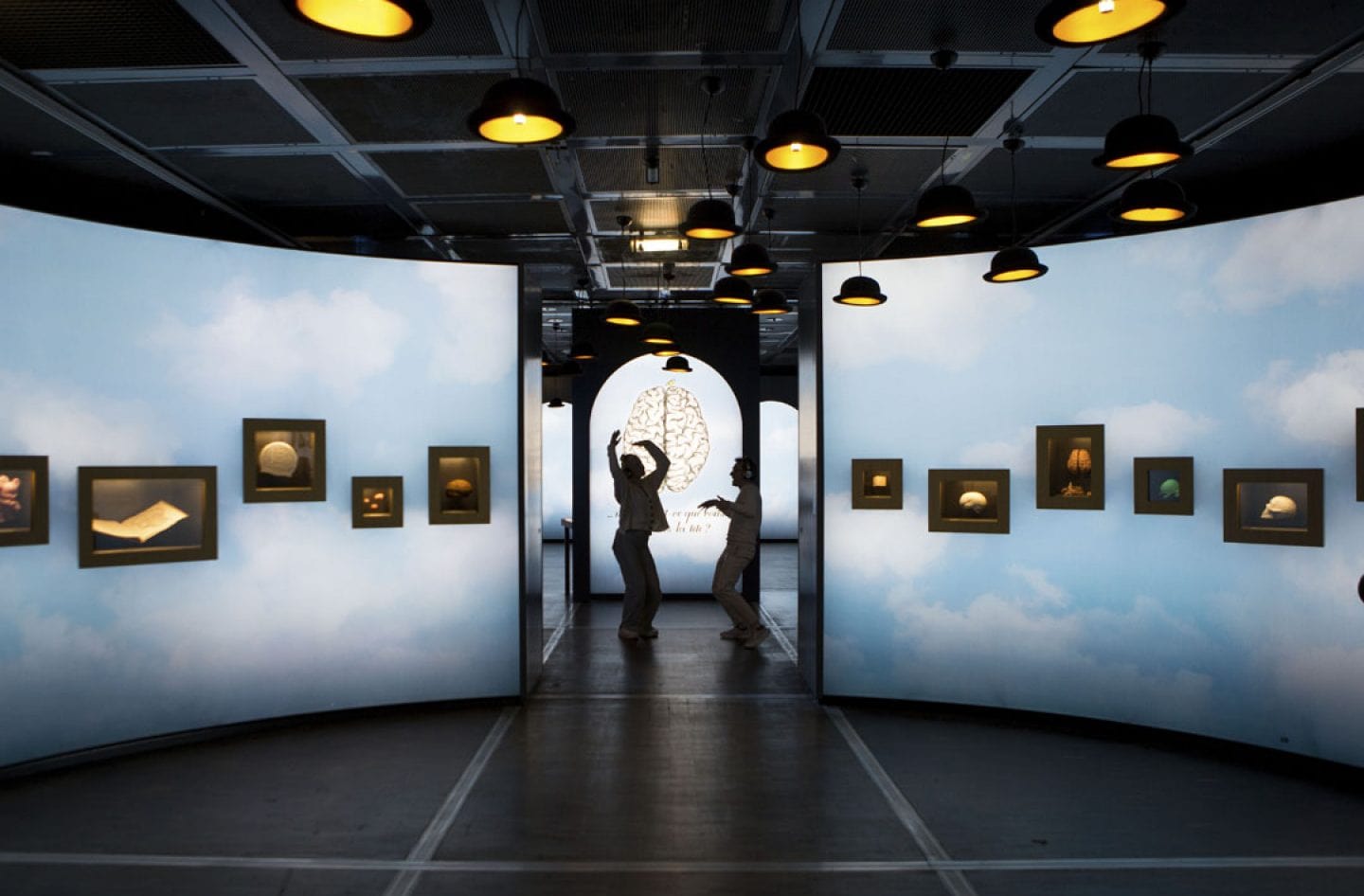
Photo: B. Ravaux EPPDCSI from www.parissecret.com/cite-des-sciences-programme-paris/
Finally, a museum typology that has spread widely especially in America is represented by university museums. The objective of these institutions is twofold: to preserve and pass on scientific progress through the display of concrete examples and the transmission of studies and research carried out at the site itself. In fact, universities are material artifacts where continuous training and experimentation are the masters. As for the layout inside these types of museums, it often consists of showcases and shelves prepared according to the technological and formal characteristics of the buildings and leaves less space for creativity and user involvement. Full-height wooden wardrobes and shelves, antique display cases and display cases furnish large classrooms where lessons are sometimes held. It is a type of exhibition very different from the classic idea of the museum but also from its direct evolution aimed at amaze and involve the visitor.


























































